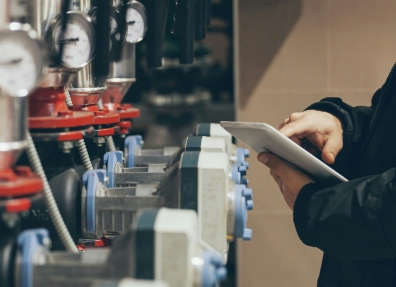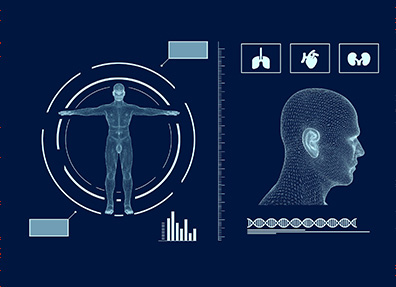Environment monitoring
Safety and environmental protection is a hot topic in the industrial field. In recent years, with the progress of sensor and big data technology, industrial production has gradually become intelligent and refined, and there are more efficient and scientific solutions to the safety problems in industrial production. While the proposal of carbon neutrality makes industrial environmental protection the focus of national strategic planning, and the market space is gradually opening up, the integration of new technologies such as the IoT and big data provides strong support for high-quality and green development of industry. As the basis of data acquisition, multiple sensor fusion technology has been widely used in the field of industrial safety and environmental protection, which is the cornerstone of the intelligent development of modern industry.
Winsen sensors have been playing excellent performance in various industrial sectors over 30 years. And the products family will keep improving and expanding to meet higher global environment protection goal.
1.Air quality monitoring
Environment monitoring is the foundation and technical support of environmental management, while air quality monitoring is an important part of environmental monitoring. Air pollutants are classified into particulate pollutants and molecular pollutants according to their existing state. Among them, the gas pollutants are sulfur dioxide nitrogen oxides,carbon monoxide, photochemical oxidant(O3), etc. There are 6 monitoring items of air quality stipulated by China which are SO2, NO2, O3, CO, PM2.5, PM10.To collect these pollutants content and concentration, corresponding sensors are applied in the detecting devices.
ZE12A,ME4-O3-E4,ME4-NO2-E4,ME4-SO2-E4| Model | Detection principle | Detection gas | Detection Range |
|---|---|---|---|
 ZEHS04 |
Module, electrochemical | CO, SO2, NO2, O3 (Scalable PM2.5, PM10, Temperature, Humidity) | See manual |
 ME3-H2S |
Module, electrochemical | CO, SO2, NO2, O3 | CO (0-10ppm), SO2 (0-1ppm), NO2 (0-1ppm), O3 (0-1ppm) |
 ME4-CO-E4 |
Electrochemical | CO | 0-1000ppm, Max 2000ppm |
2.Civil & commercial environment monitoring
People spend 70% to 90% of their life indoors, and the indoor air quality has very important impact on human health. Improving indoor air quality has become the focus concern on the pursuit of healthy life. Based on these demands, the home appliances industry tend to be more and more intelligent and healthy focused not only to realize a single basic function, but also carry expanded processing functions. With the innovation of sensing technologies and other numerous solutions, the smart home appliance industry is actively making a systematic layout in terms of new technology routes and intelligent health
ZS05,ZH07| Model | Detection principle | Detection gas | Detection Range |
|---|---|---|---|
 ZP01-MP503 |
Module,semiconductor | formaldehyde, benzene, carbon monoxide, hydrogen,alcohol, ammonia, smoke of cigarette, essence | Output 0-3 grade pollution signal |
 ZP07 |
Module,semiconductor | formaldehyde, benzene, carbon monoxide, hydrogen, alcohol, ammonia, smoke of cigarette, essence &etc. | Output 0-3 grade pollution signal |
 GM-502B |
Semiconductor、MEMS | VOC、C2H5OH、CH2O、C7H8 | 1-500ppm |
 ZM01 |
Module,semiconductor,MEMS | VOC | 0-5ppm |
 MH-Z19C |
non-dispersive infrared (NDIR) principle | CO2 | 400~10000ppm optional |
 ZE08-CH2O |
Module,electrochemical | CH2O | 0~5ppm |
 ZPH02 |
ZPH02 Particles and VOC " Module,semiconductor, NDIR dust | Dust PM2.5, VOC | VOC is 5 level Output |
 ZPHS01 |
Module, electrochemical, semiconductor VOC sensor, laser particle sensor, NDIR CO2 sensor and temperature & humidity sensor | CO2, PM2.5, CH2O, VOC, Temperature, Humidity | CO2: 0-5000ppm; PM2.5: 0-1000μg/m³; CH2O: 0-1.6ppm; VOC: 4 level; Temperature: 0-65℃ (Accuracy±0.5℃); Humidity: 0-100%RH (Accuracy±3%) |
3.Pollution source monitoring
Odor pollution refers to the odorous substances in the air, water, soil, waste, etc, which act on the human breath and cause unpleasant and harmful impact on human health. The sources of odor are widely distributed, but most of them come from chemical plants, waste treatment plants, sewage treatment plants, feed and fertilizer processing plants, livestock product farms, tanneries, pulp mills and other industrial enterprises. Especially those industries use petroleum as raw materials which contains hydrocarbon compounds such as sulfur, oxygen, nitrogen, etc., producing odors during storage, transportation, heating, decomposition, synthesis and other processes. The odors escape into the air and caused odor pollution to the environment.
It is clearly stipulated in Chinese atmospheric pollution prevention law that the emission of odorous gases into the atmosphere must be monitored in real time, and effective supervision measures must be taken to prevent residents in the surrounding from being polluted.
ME3-CH4S,ME3-C2H6S,ME3-C2H6S2,ME3-C3H9N| Model | Detection principle | Detection gas | Detection Range |
|---|---|---|---|
 ME3-NH3 |
Electrochemical | NH3 | 0-100ppm, Max 200ppm |
 ME3-H2S |
Electrochemical | H2S | 0-100ppm, Max 500ppm |







